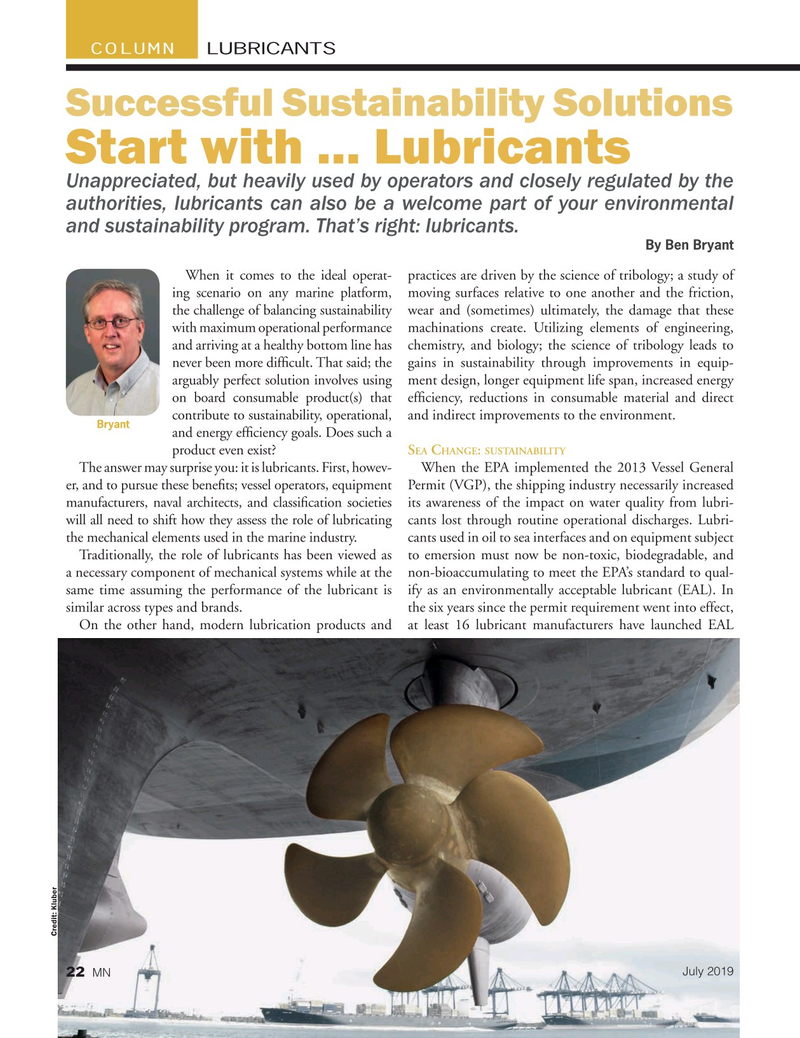
Page 22: of Marine News Magazine (July 2019)
Propulsion Technology
Read this page in Pdf, Flash or Html5 edition of July 2019 Marine News Magazine
COLUMN LUBRICANTS
Successful Sustainability Solutions
Start with … Lubricants
Unappreciated, but heavily used by operators and closely regulated by the authorities, lubricants can also be a welcome part of your environmental and sustainability program. That’s right: lubricants.
By Ben Bryant
When it comes to the ideal operat- practices are driven by the science of tribology; a study of ing scenario on any marine platform, moving surfaces relative to one another and the friction, the challenge of balancing sustainability wear and (sometimes) ultimately, the damage that these with maximum operational performance machinations create. Utilizing elements of engineering, and arriving at a healthy bottom line has chemistry, and biology; the science of tribology leads to never been more dif? cult. That said; the gains in sustainability through improvements in equip- arguably perfect solution involves using ment design, longer equipment life span, increased energy on board consumable product(s) that ef? ciency, reductions in consumable material and direct contribute to sustainability, operational, and indirect improvements to the environment.
Bryant and energy ef? ciency goals. Does such a product even exist? S C :
EA HANGE SUSTAINABILITY
The answer may surprise you: it is lubricants. First, howev- When the EPA implemented the 2013 Vessel General er, and to pursue these bene? ts; vessel operators, equipment Permit (VGP), the shipping industry necessarily increased manufacturers, naval architects, and classi? cation societies its awareness of the impact on water quality from lubri- will all need to shift how they assess the role of lubricating cants lost through routine operational discharges. Lubri- the mechanical elements used in the marine industry. cants used in oil to sea interfaces and on equipment subject
Traditionally, the role of lubricants has been viewed as to emersion must now be non-toxic, biodegradable, and a necessary component of mechanical systems while at the non-bioaccumulating to meet the EPA’s standard to qual- same time assuming the performance of the lubricant is ify as an environmentally acceptable lubricant (EAL). In similar across types and brands. the six years since the permit requirement went into effect,
On the other hand, modern lubrication products and at least 16 lubricant manufacturers have launched EAL
Credit: Kluber
July 2019 22 MN
MN July19 Layout 18-31.indd 22 6/20/2019 9:42:23 AM

 21
21

 23
23
